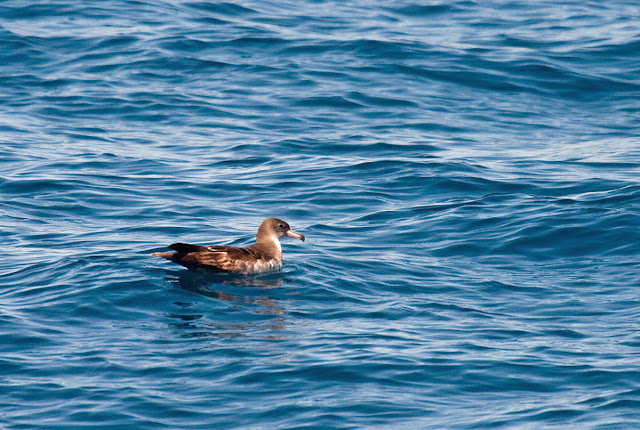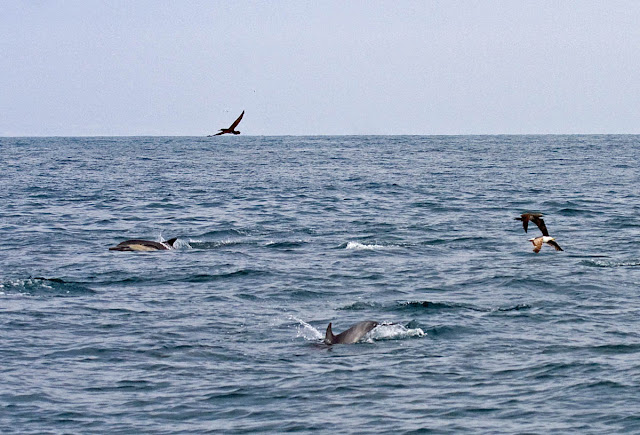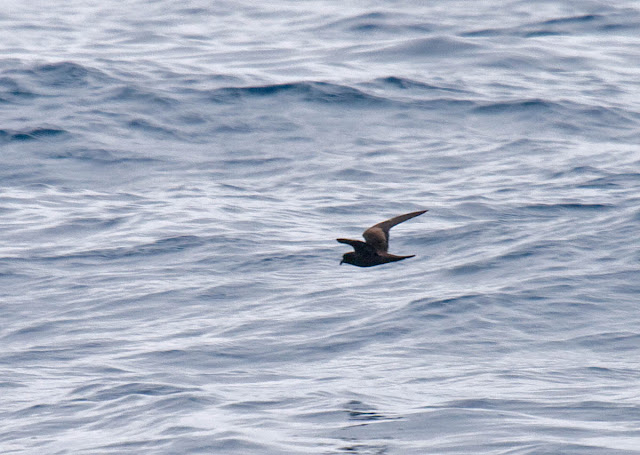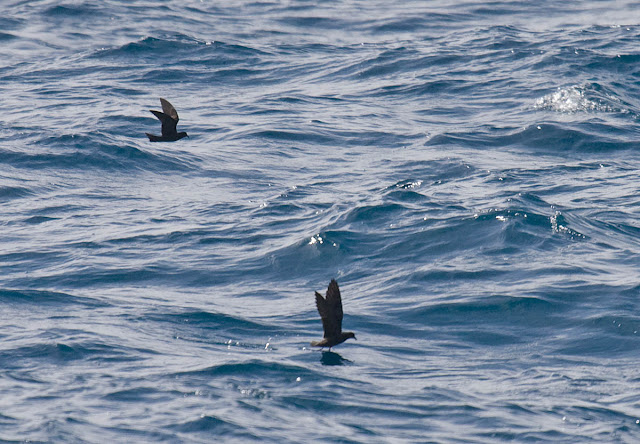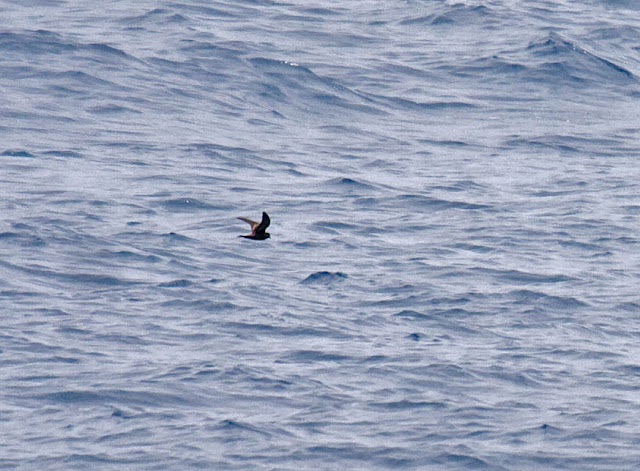I got a call from a former workmate that I had mail left at my old address. When I stopped in I found it was a copy of Birds of the Pacific Northwest: a photographic guide by Tom Aversa, Richard Cannings, and Hal Opperman, 2016.
Mr Opperman had contacted me a couple of years ago about using my photographs in a bird book he was writing. I had long since lost the emails and forgot about the project.
When I opened the book, I noted one of my photos every few pages. The book uses over 70 of my photographs. In the past I have sold the use of some of my photos. But more often I've allowed them to be used--often in trade for one of the finished products--a new bird book! It gives me satisfaction that I can share my photos in this way--share the birds--rather than having the photos stored as magnetized particles on my computer's hard drive where no one can enjoy them.
The birds in the Pacific Northwest are an area of expertise for me, especially Oregon, as I birded there about 37 years in total (1972-1979, 1985-2013). And I've reviewed many bird books. So, even though I received this book as "compensation," and 70 of the 900 bird photos were mine, I think I can offer an honest and unbiased review in 5 words:
This is a great book!
I've moved a lot in my life and my former 25 feet of shelf space for bird books and magazines has been whittled away by necessity and digital replacement. I've only kept the best of the best. My bird books now occupy less than 6 feet of bookshelf. Seven of those books deal with the status of birds in Oregon.
I treasure a hard-bound 1940 edition of Gabrielson and Jewett's
Birds of Oregon that I found in a bookstore in Hillsboro, Oregon in 2006. I had a paperback reprint of this book from 1970 that I probably picked up about 1975 and wore completely out. This book details the status and distribution of birds in Oregon from Lewis and Clark in 1805 to about 1935.
From then to end of the 20th century a worthy companion to that early work is
Birds of Oregon: a general reference, 2003, edited by David B. Marshall, Matthew G. Hunter, and Alan L. Contreras. I was privileged to write about 20 species accounts in that book. It is over-sized (9x12) with 752 pages.
Both of these previous books are status and distribution. They have very few bird illustrations (and the few they have are black-and-white photos or line drawings). They are more about the when and where of the birds (population, behavior, breeding, habitat and diet) and not about the identification at all. Thus, there are many range maps. These books are mostly text. They are for serious locality-based birders.
If you want illustrations and identification descriptions of all the plumages for males, females, and immatures, then you can't go wrong with the National Geographic (2011, 6th Ed.) or Sibley (2014, 2nd Ed.) field guides. They show 900+ species for North America, but the range maps are not very precise when it comes to showing range at the state level, or smaller. These are a bit too "advanced" for beginners, and as they cover all of North America north of Mexico, they have about double the number of species covered as one would likely find in just Oregon.
For a beginner book, my wife likes the Lone Pine Press
Birds of Oregon, 2003, by Roger Burrows and Jeff Gilligan. It shows only 328 of the most likely birds in Oregon (of about 515 possible). It has nice big paintings of a typical individual in adult male breeding plumage. It has detailed local maps for range, and plumage and behavioral descriptions for identification. It generally does not show females or immatures, or even males in winter plumage, so it is likely you'll see a common bird in an unfamiliar plumage, or a somewhat unusual bird not covered at all, and won't be able to identify it with this book alone.
Now we come to the new
Birds of the Pacific Northwest: a photographic guide. It is a 464-page book, appropriate in dimensions (5.5 x 8.5 inches) for a large pocket-sized field guide (though not as large as the Sibley). It has 900 photos of males, females, immatures, and field-identifiable subspecies as appropriate. Each species account covers description, similar species, status & distribution, habitat associations, behavior & feeding, and vocalizations. Finally, it has 400 very accurate maps showing breeding, wintering, and migration range in Oregon, Washington, Idaho, southern British Columbia and Alberta, to the continental divide of Montana and extreme western Wyoming and sw Manitoba.
This guide has all the best parts of the above status & distribution references and the best popular North American field guides. It has only birds that occur in the local region, at least once
annually. So very rare birds that occur less than once every year
somewhere in the Pacific Northwest are not covered. 412 species are covered--a good compromise not to cover perhaps 175 additional species that may occur once per decade, or less.
It has status and distribution without being too in-depth. Identification, illustrations, and detailed maps help beginners limit their options. This could easily be the only field guide one would need in the Pacific Northwest, from beginner, intermediate, and up to the early stages of advanced birders (immature gulls, etc., aren't well explained).
Okay, this book is not perfect. The wonderfully accurate maps have a flaw.
If you read the explanation of the maps, you will note that the mapped range of "migration" includes regular migration of common species where the species neither breeds nor spends the winter. As an example, the abundant Red-necked Phalarope is mapped accurately as a migrant across the Pacific Northwest, but not in the Cascade mountains or coastal forests of western Oregon and Washington, as one would expect.
But the "migration" label also includes the migratory range of very rare migrants. An example is Tennessee Warbler. It is mapped as summering in the Rocky mountains in NW Montana and northward, I assume accurately. However, it is shown as a migrant in
all habitats of Oregon, Washington, Idaho, and more. Yet, actually, Tennessee Warblers migrate primarily east of the Rocky Mountains and are rare anywhere in Washington and Oregon, with usually only a handful of records each year, if that, primarily from desert oases east of the Cascades. In 40 years I've only seen Tennessee Warbler once in the Pacific Northwest--and it was initially found by someone else.
I understand the difficulty in mapping migrants, abundant to less-than-annual. But when every breeding and wintering species is mapped so accurately, having rare migrants mapped so broadly and inaccurately in every habitat, makes no sense. It ruins one of the best features of this volume. I'm sure the authors agonized over this. I think they made the wrong decision. Personally, I wouldn't show the migratory range for very rare occurrences. Leave it empty as they did for the casual (less than annual) migration of Black-throated Sparrows west of the Cascades. The text does explain migratory status fairly accurately ("casual" and "rare" are explained on page 26 of the introduction), but the large bright yellow migration map covering entire groups of states without habitat breaks screams, "I
could have seen this bird here." Leave the map empty where a species is less than annual and explain in the text that it might show up in certain locations, seasons, and habitats.
Only one other minor quibble. I would have tried to find a way to include a life list checklist, either at the end of the book or in each species account.
I believe this is the most useful regional field guide to the birds in the northwest corner of the contiguous United States.
Here is the publisher's page and ordering information:
http://www.washington.edu/uwpress/search/books/AVEBIR.html







